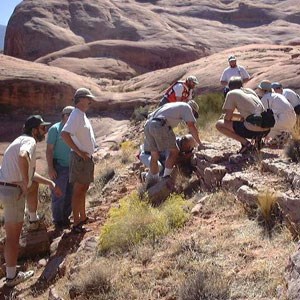
Parks, regions, networks, and the Geologic Resources Division work together in their planning efforts in many ways, including:
- project scoping to identify available data, geologic resource management issues, and impacts;
- inventorying and interpreting park geologic resources information (surficial and bedrock geology, and identification of geologic features and processes) in collaboration with other agencies, universities, and technical experts;
- development of park-specific geologic plans such as paleontologic, and oil and gas management plans;
- developing solutions to park-specific geologic problems such as shoreline erosion, avoidance of geologic hazards, and restoration of parklands disturbed by activities such as mining, logging, oil and gas operations, and storm damage. GRD assistance includes site assessments, project design, and oversight;
- review of park planning documents such as General Management Plans, Foundation Documents, and implementation plans to assure they accurately describe geologic resources, depict potential impacts, and comply with NPS laws, regulations, and policies; and
- finding geologic expertise (U.S. Geologic Survey, state geologic surveys, universities, and others) to work with park specialists as appropriate.
Last updated: February 28, 2017
